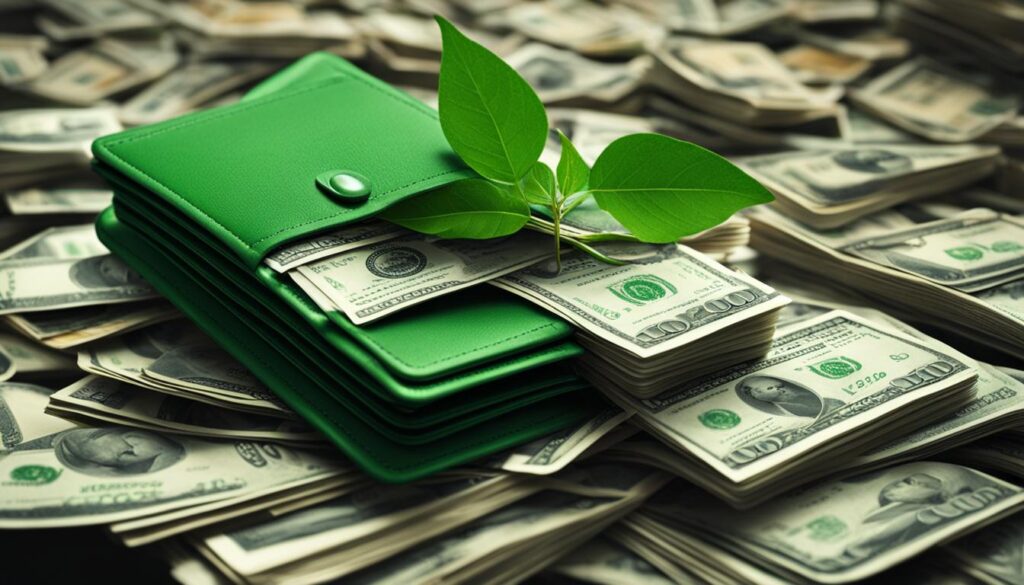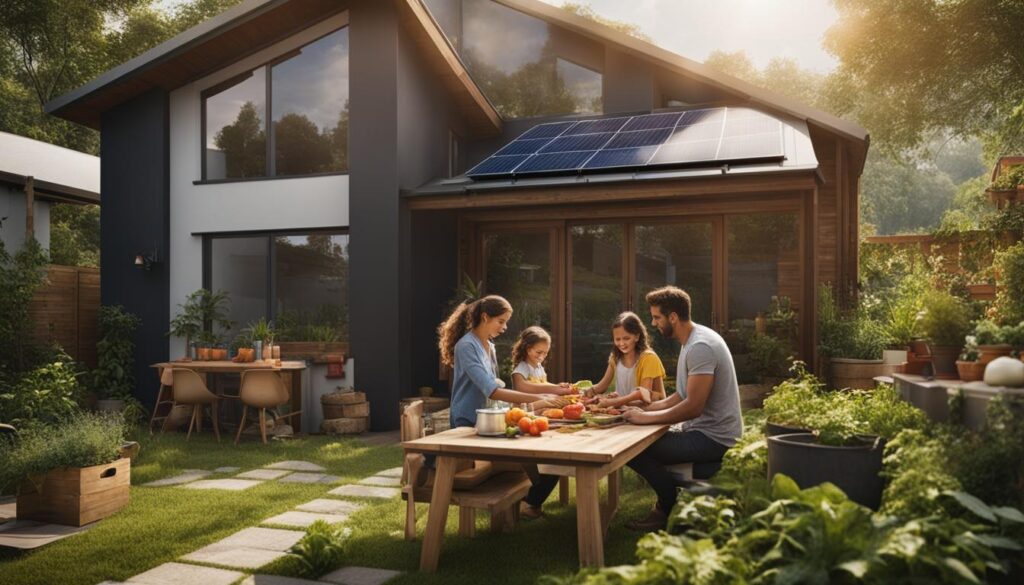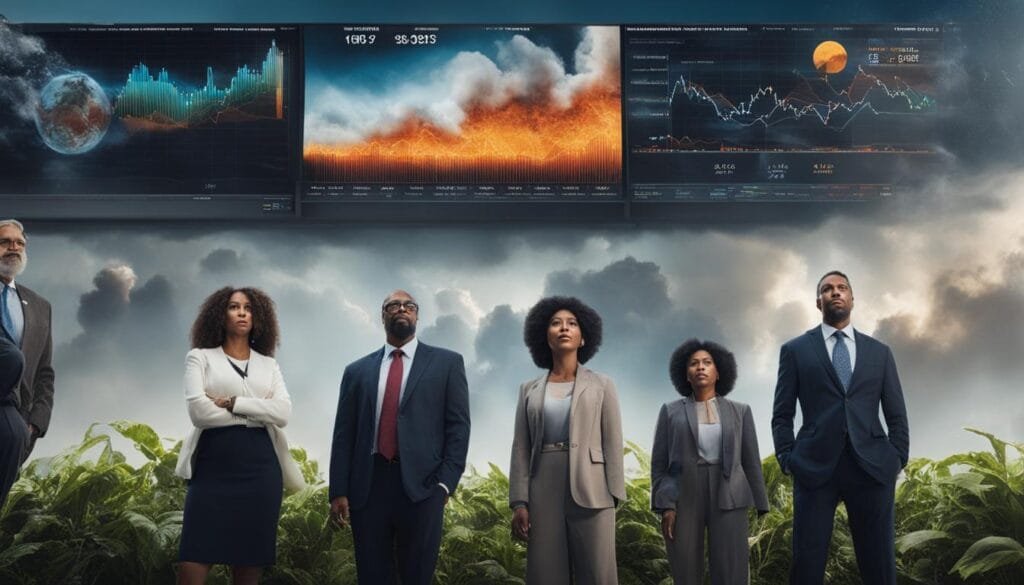President Joe Biden signed the Inflation Reduction Act into law, representing the largest investment the U.S. has made toward combating climate change. The law aims to slash greenhouse gas emissions by 2030 and includes $260 billion in new and extended clean-energy tax credits. It also provides $1.5 billion for oil and gas companies that reduce their methane emissions and $27 billion for “green banks” that promote clean-energy infrastructure investment. Consumers may benefit from $80 billion worth of new rebates for electric vehicles and energy efficiency upgrades.
Key Takeaways:
- Climate legislation, such as the Inflation Reduction Act, can have a significant impact on personal finances.
- The law includes tax credits for electric vehicles, rebates for energy efficiency upgrades, and funding for clean-energy infrastructure.
- Individuals can save money by adopting sustainable practices, such as using LED lightbulbs and reducing food waste.
- Investing in clean-energy infrastructure and forest conservation are crucial for addressing climate change.
- Policymakers and individuals should consider the financial implications and opportunities associated with climate legislation.
The Impact of Climate Legislation on Personal Finances
The Inflation Reduction Act, signed into law by President Joe Biden, has significant implications for individuals’ financial situations. This landmark legislation includes provisions aimed at incentivizing sustainable practices and reducing carbon emissions. By understanding the impact of climate legislation on personal finances, individuals can make informed decisions to navigate these changes effectively.

One of the key aspects of the Inflation Reduction Act is the introduction of tax credits for purchasing electric vehicles. Individuals and couples can receive tax credits of up to $7,500 for new vehicles and $4,000 for used vehicles. This incentivizes the transition to cleaner transportation options while reducing dependence on fossil fuels. Additionally, homeowners can benefit from tax credits for installing solar panels, heat pumps, and other energy-efficient systems. These measures not only contribute to environmental sustainability but also help lower energy bills and increase energy efficiency in households.
However, it is important to note that the Inflation Reduction Act has faced criticism for its investments in fossil fuels. Environmental activists have raised concerns about the potential negative impact on the environment and the contradiction of supporting both clean energy and traditional fossil fuel industries.
The financial impact of climate policy
While climate legislation aims to address the urgent need for environmental sustainability, it also presents financial opportunities and challenges. By adopting sustainable practices and taking advantage of tax incentives, individuals can contribute to reducing their carbon footprint while potentially saving money on energy bills and vehicle expenses. However, the potential conflicts between environmental and economic interests highlight the need for ongoing evaluation and adjustments to ensure a sustainable and equitable transition to a low-carbon economy.
Simple Ways to Go Green and Save Money
When it comes to addressing climate change, every individual can make a difference. By adopting sustainable habits, you not only contribute to mitigating the effects of climate change but also save money in the process. Small changes in your daily routine can have a significant impact on both the environment and your finances.
One easy step to go green is by switching to LED lightbulbs. These energy-efficient bulbs not only last longer but also consume less electricity, resulting in lower energy bills. Another way to save money and reduce your carbon footprint is by unplugging electronic devices when they’re not in use. Even when turned off, many devices continue to draw power, adding unnecessary costs to your electricity bill.
Did you know that washing clothes in cold water can also help you save money and energy? Using cold water not only conserves energy but also helps preserve the quality of your clothes. Additionally, adjusting your thermostat by just a few degrees can make a significant difference in your energy consumption and reduce your heating or cooling costs.
Reducing plastic use is another impactful way to go green and save money. Investing in reusable water bottles, grocery bags, and food storage containers can eliminate the need for single-use plastic items, helping you reduce waste and cut down on expenses. Adopting a more plant-based diet can also contribute to a greener lifestyle while potentially saving money on grocery bills.
Summary:
- Switch to LED lightbulbs to save energy and lower electricity bills.
- Unplug electronic devices when not in use to reduce standby power consumption.
- Wash clothes in cold water to conserve energy and preserve garment quality.
- Adjust your thermostat to save on heating and cooling costs.
- Reduce plastic use by investing in reusable items.
- Consider adopting a more plant-based diet to reduce carbon emissions and potentially lower grocery expenses.
Table: Energy-Saving Tips Comparison
| Actions | Benefits | Estimated Savings |
|---|---|---|
| Switching to LED lightbulbs | Reduced electricity consumption | $50 per year |
| Unplugging electronic devices | Eliminating standby power usage | $100 per year |
| Washing clothes in cold water | Energy conservation and clothing preservation | $70 per year |
| Adjusting thermostat | Lower heating and cooling costs | $150 per year |
| Reducing plastic use | Less environmental pollution and waste | Varies |
| Adopting a plant-based diet | Reduced carbon emissions and potential grocery savings | Varies |
By implementing these simple changes, not only do you contribute to a greener future, but you also save money in the process. Remember, every small action counts, and together we can make a significant impact in combating climate change.

The Importance of Infrastructure in Addressing Climate Change
Investing in a Sustainable Future
The Inflation Reduction Act recognizes the critical role that infrastructure plays in addressing climate change and transitioning to a sustainable future. By allocating funds towards clean-energy infrastructure projects, such as renewable energy development and energy-efficient upgrades, the law aims to reduce greenhouse gas emissions and build a more resilient economy. These investments are essential for achieving the ambitious emission reduction targets outlined in the legislation.
One of the key challenges in implementing climate-friendly infrastructure is the cost and complexity associated with altering or replacing existing systems. Many infrastructure projects are designed to last for decades, making it crucial to balance environmental considerations with the need for long-term economic viability. By prioritizing energy-efficient upgrades to existing infrastructure and incorporating sustainable design principles into new projects, we can minimize the carbon footprint of our built environment.
The Benefits of Infrastructure Investments
Investing in climate-resilient infrastructure offers numerous benefits beyond reducing greenhouse gas emissions. Upgrading outdated systems can lead to cost savings in the long run by decreasing energy consumption and maintenance costs. By creating a more efficient and sustainable infrastructure, we can enhance the quality of life for communities, improve public health outcomes, and create new job opportunities in the clean energy sector.
Furthermore, climate-focused infrastructure investments can help ensure the availability of critical services during extreme weather events and other climate-related challenges. By reinforcing and modernizing our infrastructure, we can enhance our ability to withstand and recover from the impacts of climate change, safeguarding the well-being of both individuals and the economy.
| Benefits | Challenges | |
|---|---|---|
| 1 | Reduced greenhouse gas emissions | Cost and complexity of infrastructure alterations |
| 2 | Cost savings through energy efficiency | Long-term economic viability |
| 3 | Improved quality of life and public health | Ensuring critical services during extreme weather events |
| 4 | New job opportunities in the clean energy sector |
By prioritizing sustainable infrastructure investments, we can create a pathway towards a low-carbon future while simultaneously addressing the pressing challenges of climate change. It is imperative for policymakers, businesses, and individuals to collaborate in developing innovative solutions that not only minimize environmental impacts but also drive economic growth and improve societal well-being.
The Role of Forest Conservation in Climate Change Mitigation
Forest conservation plays a critical role in mitigating climate change by addressing deforestation, which accounts for approximately 20% of greenhouse gas emissions. To effectively combat this issue, global carbon credit markets have emerged as a mechanism to fund rainforest conservation efforts. These markets incentivize the preservation and restoration of forests by allowing entities to purchase carbon credits to offset their own emissions. By including forest conservation measures in international agreements and encouraging Fortune 500 companies to account for the financial risks associated with deforestation, progress can be made in reducing global emissions.
However, implementing effective forest conservation strategies presents challenges. One significant obstacle is the conflicting local economic incentives. In many regions, deforestation is driven by activities such as logging, agriculture, and mining, which provide immediate economic benefits to local communities. Balancing these economic interests with the need for forest conservation requires finding sustainable solutions that provide alternative livelihoods and economic opportunities.
Additionally, increased transparency and disclosure regarding the financial risks associated with deforestation are crucial. Encouraging companies to disclose their exposure to deforestation-related risks in their financial statements can help investors and stakeholders make informed decisions. It also highlights the financial impact of deforestation, creating an incentive for companies to adopt sustainable practices and contribute to forest conservation efforts.
The Role of Forest Conservation in Climate Change Mitigation
Forest conservation is a vital component of climate change mitigation efforts. By addressing deforestation and promoting the preservation of forests, greenhouse gas emissions can be significantly reduced. Implementing effective forest conservation strategies involves overcoming economic incentives for deforestation and increasing transparency in financial reporting. Through global carbon credit markets, international agreements, and corporate accountability, progress can be made in protecting forests and combating climate change.
| Forest Conservation Strategies | Challenges | Solutions |
|---|---|---|
| Include forest conservation measures in international agreements | Conflicting local economic incentives | Find sustainable solutions that provide alternative livelihoods |
| Encourage Fortune 500 companies to account for deforestation-related financial risks | Lack of transparency and disclosure | Require companies to disclose exposure to deforestation-related risks |
| Promote global carbon credit markets to fund rainforest conservation | Costs and financing challenges | Create financial incentives for carbon credit purchases |

Investing in forest conservation is not only an environmental imperative but also a financial opportunity. Protecting and preserving forests can contribute to carbon sequestration, which has the potential to generate additional revenue through carbon markets. By integrating forest conservation into climate change mitigation strategies, we can address both environmental and financial goals.
Conclusion
Climate legislation and finance intersect in various ways, offering both challenges and opportunities for individuals and the economy. The Inflation Reduction Act represents a significant investment in combating climate change and transitioning to a cleaner energy system. By implementing sustainable practices, individuals can contribute to greenhouse gas reduction while saving money. Investing in clean-energy infrastructure and promoting forest conservation are also vital components of addressing climate change. As climate legislation continues to evolve, it is crucial for policymakers and individuals to consider the financial implications and opportunities associated with these measures.
FAQ
How does the Inflation Reduction Act affect individuals’ finances?
The Inflation Reduction Act includes incentives such as tax credits for purchasing electric vehicles and installing energy-efficient systems in homes. These measures can help lower energy bills and reduce bill volatility, benefiting individuals financially.
What are some simple ways to go green and save money?
By making small changes in daily habits such as switching to LED lightbulbs, unplugging electronic devices, and using cold water for washing clothes, individuals can reduce energy consumption and save money. Adjusting the thermostat, cutting down on plastic use, adopting a more plant-based diet, and reducing food waste are also environmentally-friendly and cost-saving measures.
Why is infrastructure investment important for addressing climate change?
Investing in clean-energy infrastructure projects and upgrading existing infrastructure to be more energy-efficient are crucial for reducing greenhouse gas emissions. However, altering or replacing infrastructure designed to last for decades can be costly and complex.
What role does forest conservation play in climate change mitigation?
Deforestation contributes to about 20% of greenhouse gas emissions. By including forest measures in international agreements and encouraging companies to account for the financial risks associated with deforestation, progress can be made in reducing global emissions. However, implementing effective forest conservation strategies faces challenges due to conflicting local economic incentives and the need for increased disclosure.
How Does Climate Change Legislation Impact Daily Spending Habits?
Daily spending affected by climate change legislation can have a profound impact on individual habits. As regulations shift towards more sustainable practices, citizens may witness increased prices on carbon-intensive products or services. This could lead to a change in purchasing decisions, with people opting for eco-friendly alternatives. Additionally, incentives and subsidies might emerge for greener choices, encouraging individuals to adjust their spending habits accordingly. Overall, climate change legislation can significantly influence daily spending patterns.
What are the Potential Investment Opportunities in a Climate-Conscious World?
Unearthing investment opportunities in a climate-conscious world has become a priority for many. Renewable energy sources like solar and wind power are gaining immense traction. Companies specializing in sustainability-focused technologies and innovations are also prime investment options. Moreover, green infrastructure projects, such as eco-friendly buildings, are becoming lucrative investments. The shift towards electric vehicles and sustainable agriculture are further avenues worth exploring for investors in a climate-conscious world.


Pingback: Eco-Savvy Spending: Boosting Financial Literacy in a Warming World! – Straight Fire Money